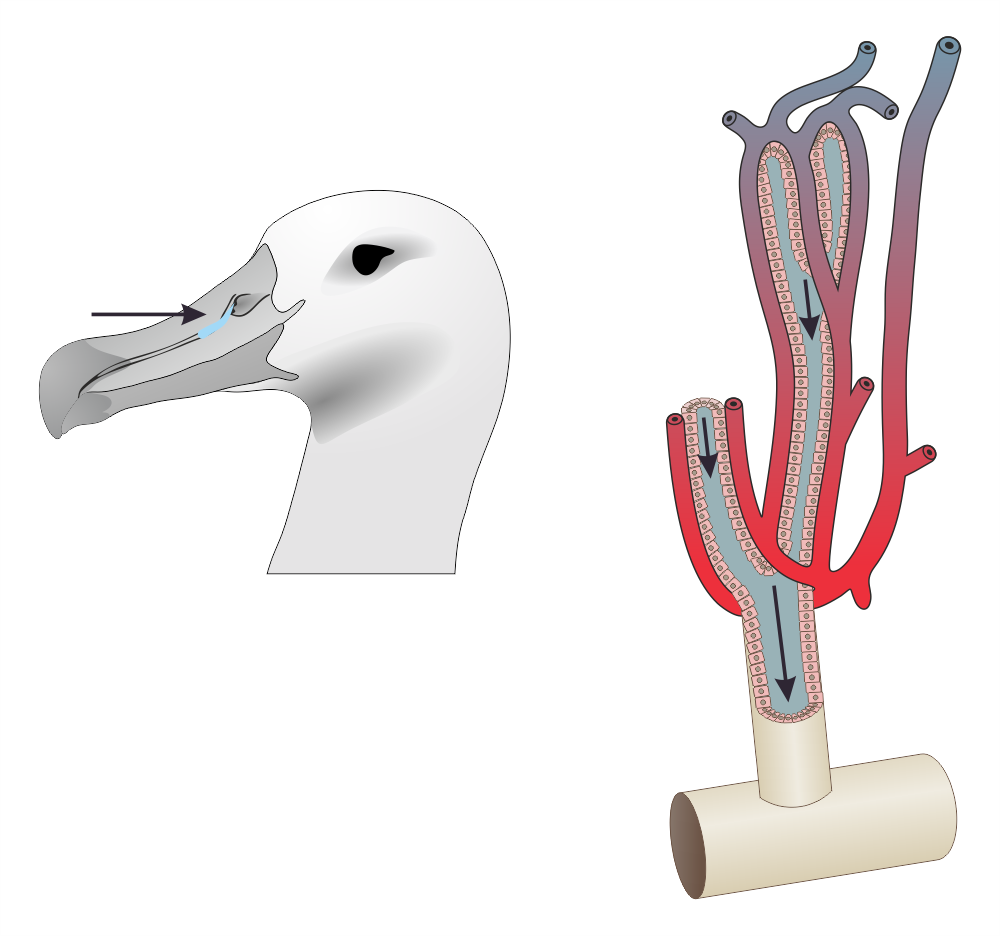Supraorbital gland on:
[Wikipedia]
[Google]
[Amazon]
 The supraorbital gland is a type of lateral nasal gland found in some species of marine birds, particularly
The supraorbital gland is a type of lateral nasal gland found in some species of marine birds, particularly
 The supraorbital gland is a type of lateral nasal gland found in some species of marine birds, particularly
The supraorbital gland is a type of lateral nasal gland found in some species of marine birds, particularly penguin
Penguins (order Sphenisciformes , family Spheniscidae ) are a group of aquatic flightless birds. They live almost exclusively in the Southern Hemisphere: only one species, the Galápagos penguin, is found north of the Equator. Highly adap ...
s, which removes sodium chloride
Sodium chloride , commonly known as salt (although sea salt also contains other chemical salts), is an ionic compound with the chemical formula NaCl, representing a 1:1 ratio of sodium and chloride ions. With molar masses of 22.99 and 35. ...
from the bloodstream. The gland's function is similar to that of the kidneys, though it is much more efficient at removing salt, allowing penguins to survive without access to fresh water. Contrary to popular belief, the gland does not directly convert saltwater to freshwater. The term ''supraorbital'' refers to the area just above the eye socket (which is known as the orbit
In celestial mechanics, an orbit is the curved trajectory of an object such as the trajectory of a planet around a star, or of a natural satellite around a planet, or of an artificial satellite around an object or position in space such as ...
).
Living in saltwater environments would naturally pose a large problem for penguins because the ingestion of saltwater
Saline water (more commonly known as salt water) is water that contains a high concentration of dissolved salts (mainly sodium chloride). On the United States Geological Survey (USGS) salinity scale, saline water is saltier than brackish water, ...
would be detrimental to a penguin's health. Although penguins do not directly drink water, it is taken in when they engulf prey
Predation is a biological interaction where one organism, the predator, kills and eats another organism, its prey. It is one of a family of common feeding behaviours that includes parasitism and micropredation (which usually do not kill ...
. As a result, saltwater enters their system and must be effectively excreted. The supraorbital gland has thus enabled the penguins' survival in such environments due to its water-filtering capability. The gland is located just above the eyes and surrounds a capillary bed
A capillary is a small blood vessel from 5 to 10 micrometres (μm) in diameter. Capillaries are composed of only the tunica intima, consisting of a thin wall of simple squamous endothelial cells. They are the smallest blood vessels in the body: ...
in the head. This capillary bed constantly strains out the salt in the saltwater that a penguin takes in. Since the byproduct of the gland has roughly five times as much salt as would normally be found in the animal's fluids, the supraorbital gland is highly efficient.
The penguin excretes the salt byproduct as a brine
Brine is a high-concentration solution of salt (NaCl) in water (H2O). In diverse contexts, ''brine'' may refer to the salt solutions ranging from about 3.5% (a typical concentration of seawater, on the lower end of that of solutions used for ...
through its bill
Bill(s) may refer to:
Common meanings
* Banknote, paper cash (especially in the United States)
* Bill (law), a proposed law put before a legislature
* Invoice, commercial document issued by a seller to a buyer
* Bill, a bird or animal's beak
Pla ...
. Often, the fluid drips out, and this gives the appearance of a runny nose. However, the fluid may also be sneezed out. In the absence of saltwater, caused by captivity, the supraorbital gland will lie dormant as it has no other purpose. Having a dormant supraorbital gland does not negatively affect the health of a penguin.
See also
*Osmoregulation
Osmoregulation is the active regulation of the osmotic pressure of an organism's body fluids, detected by osmoreceptors, to maintain the homeostasis of the organism's water content; that is, it maintains the fluid balance and the concentration o ...
*Preorbital gland
The preorbital gland is a paired exocrine gland found in many species of hoofed animals, which is homologous to the lacrimal gland found in humans. These glands are trenchlike slits of dark blue to black, nearly bare skin extending from the me ...
*Salt gland
The salt gland is an organ for excreting excess salts. It is found in the cartilaginous fishes subclass elasmobranchii (sharks, rays, and skates), seabirds, and some reptiles. Salt glands can be found in the rectum of sharks. Birds and reptiles ...
References
External links
* * {{Animalosmo Glands Bird anatomy